|
Kesterson Lumber Company |
|
|
 |
|
Kesterson Lumber #2 in Klamath Falls.
|
|
|
|
History Irving Ernest Kesterson was born into a lumbering family, and after growing up around various sawmills his father owned or operated in northern California and southern Oregon he formed the Kesterson Lumber Company, which first operated a mill near Grants Pass, Oregon. The Kesterson company bounced around a bit, operating a number of smaller mills in the region before settling back in the Dorris area, where by 1922 Irving Kesterson and his brother William were operating two small mills northwest of town, one under the Kesterson Lumber name and the other as Topsy Lumber Company, with a joint Kespine Lumber Company owning some assetts just to confuse the picture. In 1925 the Kestersons purchased the latest of a series of sizeable timber sales just across the state line northwest of Dorris, at which time they decided to build a new mill at Dorris and a railroad to bring the logs from the woods to the mill. The Kesterson brothers initially continued operating under both the Kesterson and Topsy names, but by 1927 everything had been consolidated under the Kesterson banner. The logging railroad continued to spread northwest into Oregon through the rest of the 1920s. Kesterson invested the profits from the Dorris operation into a new sawmill built adjacent to the vast Weyerhaeuser mill just south of Klamath Falls, which opened in later 1929 or early 1930. The Depression conditions prevailing by that point only supported operations of one sawmill, which forced the company to close the Dorris mill and scrap out the logging railroad there. Meanwhile, Kesterson instead started focusing on 29,100 acres of land they purchased from Long-Bell Lumber in the Yamsey Mountain area. The Lamm Lumber Company was starting the process of building a logging railroad of their own that would span the distance between those holdings and the Southern Pacific main line, and Kesterson signed a contract agreeing to ship 550 mmbf of logs over the Lamm railroad. Kesterson subsequently built a new logging railroad off the Lamm railroad into the holdings; however, the Depression forced Kesterson to close the new mill in Klamath Falls in 1931 and cancel the agreement with Long-Bell. Lamm later brought a lawsuit against Kesterson for breaking the contract, but had to settle for the Kesterson logging railroad and a few pieces of used logging equipment. The newly reorganized Kesterson Lumber Corporation reopened the Klamath Falls mill in 1933, initially processing logs cut in northeastern California and brought to the mill by the Great Northern. Kesterson would have one last rail show in the Klamath Basin, which came about in 1937 after the company got the Indian Service to award the remaining timber at the top of the Algoma Lumber incline transferred to them after the Algoma coumpany suspended operations in favor of new logging elsewhere. Kesterson acquired the railroad and Algoma's Shay #4, which they used above the incline, plus another unknown locomotive to move the cars from the bottom of the incline to the SP connection. This situation lasted until 1940, when a broken levy inundated the railroad under three feet of water, at which point Kesterson established a rail to truck reload at the bottom of the incline and trucks effected the final delivery to the mill. This sitation lasted until 1941 when the timber ran out and the railroad was abandoned. The Kesterson mill itself only lasted another three years before shutting down as well. |
|
|
Maps |
|
Map of the Kesterson Lumber Company logging railroad system.
|
 |
|
Map of the Algoma network at Algoma/Rattlesnake Point, parts of which Kesterson operated between 1937 and 1941.
|
|
|
|
Locomotive Roster 1- Lima 2-truck Shay, c/n 3291, Built 1925. Cylinders 11x12, Drivers 33", Weight 50 tons. Built new as Topsy Lumber Company #1, Dorris, CA; to Kespine Lumber Company, Dorris; to Kesterson Lumber Company #1, Dorris; to Whitney Engineering Company, Tacoma, Washington, 1928; to Ward Sargent Timber Company #1, Oscasta, WA, 1928; to M-B Logging Company, Markham, WA; Scrapped 1948. 2- Heisler 3-truck, c/n 1520, Built 1925. Built for Whitney Engineering, Heisler's west coast dealer; to Kesterson Lumber Company #2, Dorris, CA; to Ewauna Box, initially for Quartz Mountain line. Scrapped. 4- Lima 3-Truck Shay, c/n 2754, Built 1914. Cylinders 12x15, Drivers 35", Weight 79 tons. Built as Stephens-Bird Lumber & Log Company #4, Monroe, WA; to Algoma Lumber #4; to Klamath Timber Company (Kesterson Lumber Company) #4, Algoma, OR; to Oregon Ship Building #4, Portland, Oregon, 1944. |
|
|
|
Photos |
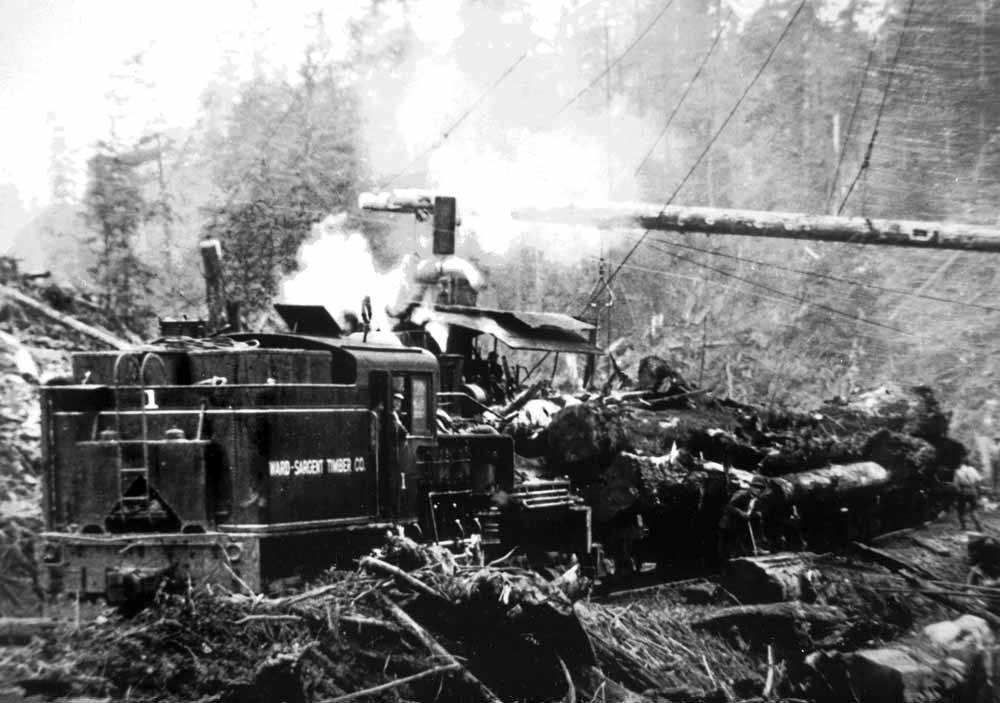 |
|
Ward-Sargent Shay #1, formerly the Kesterson #1, at work in the woods near Aberdeen, Washington. Martin Hansen/John Labbe/Oso Publishing Company collections,
John T. Labbe Collection of Logging and Railroad Photographs, 1892-2010, Washington State Archives, Digital Archives, http://www.digitalarchives.wa.gov.
|
 |
|
Another view of the former Kesterson Lumber #2 in Klamath Falls near the end of its life.
|
 |
|
An R.C. Moulton photo of the by then Kesterson Lumber #4 in June 1939. John T. Labbe Collection of Logging and Railroad Photographs, 1892-2010, Washington State Archives,
Digital Archives, http://www.digitalarchives.wa.gov.
|
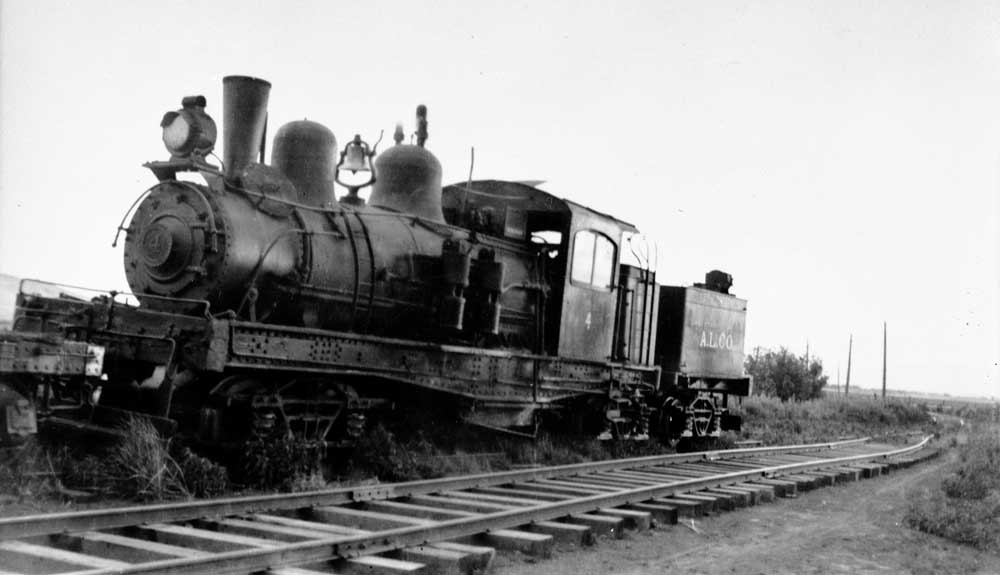 |
|
Another R.C. Moulton photo of the Kesterson Lumber #4 in June 1939. John T. Labbe Collection of Logging and Railroad Photographs, 1892-2010, Washington State Archives,
Digital Archives, http://www.digitalarchives.wa.gov.
|
 |
|
Much like Big Lakes Box, one of the most lasting remnants of the Kesterson operation is a McGiffert log loader on display at the Collier Logging Museum near Chiloquin. Clyde
built this machine as their c/n 678 in 1907 for the McCloud River Railroad Company, it later passed through the hands of the McCloud River Lumber Company before Kesterson bought it in 1925 for use on the
new railroad out of Dorris. Kesterson sold the machine to Weyerhaeuser in 1929, who donated it to Collier in 1961. The Two Four Two fire burned most of the wood pieces off of this machine in September
2020, but a contract has been let to restore the loader.
|
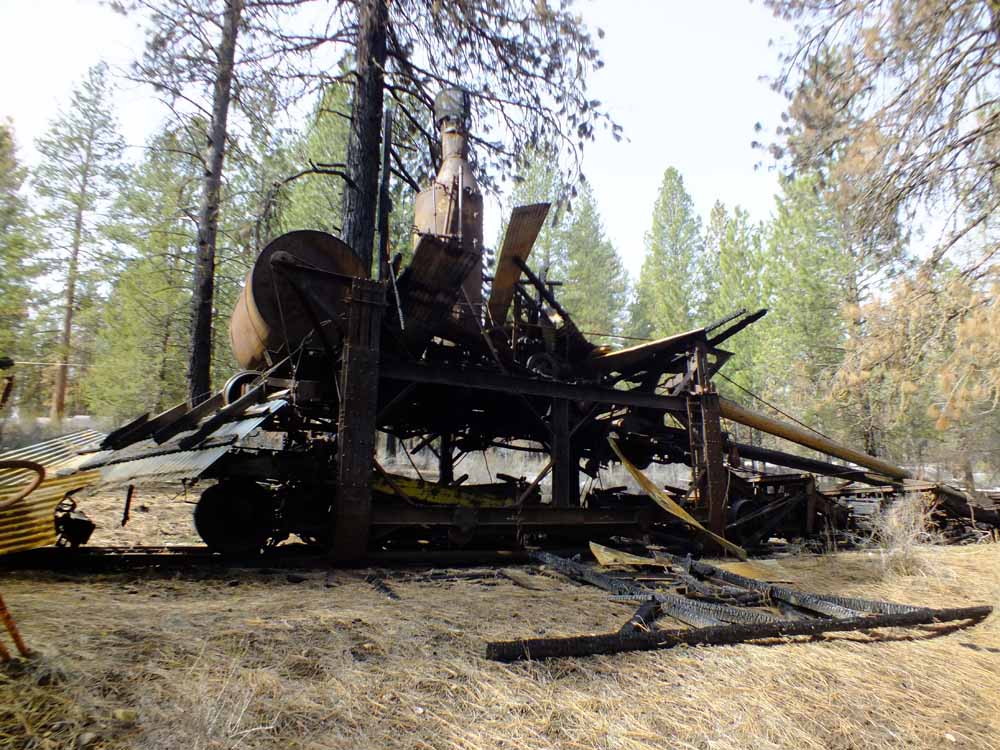 |
|
The loader the spring after the fire burned the wood pieces. Jeff Moore photo.
|
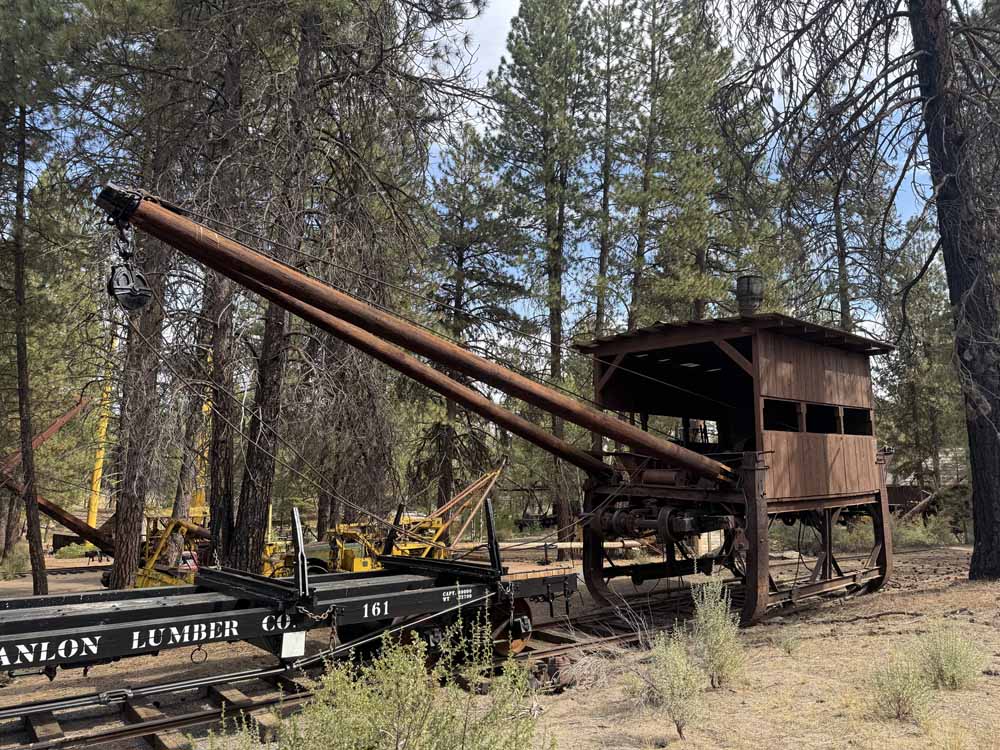 |
|
The McGiffert in September 2025 following a beautiful restoration job. Jeff Moore photo.
|
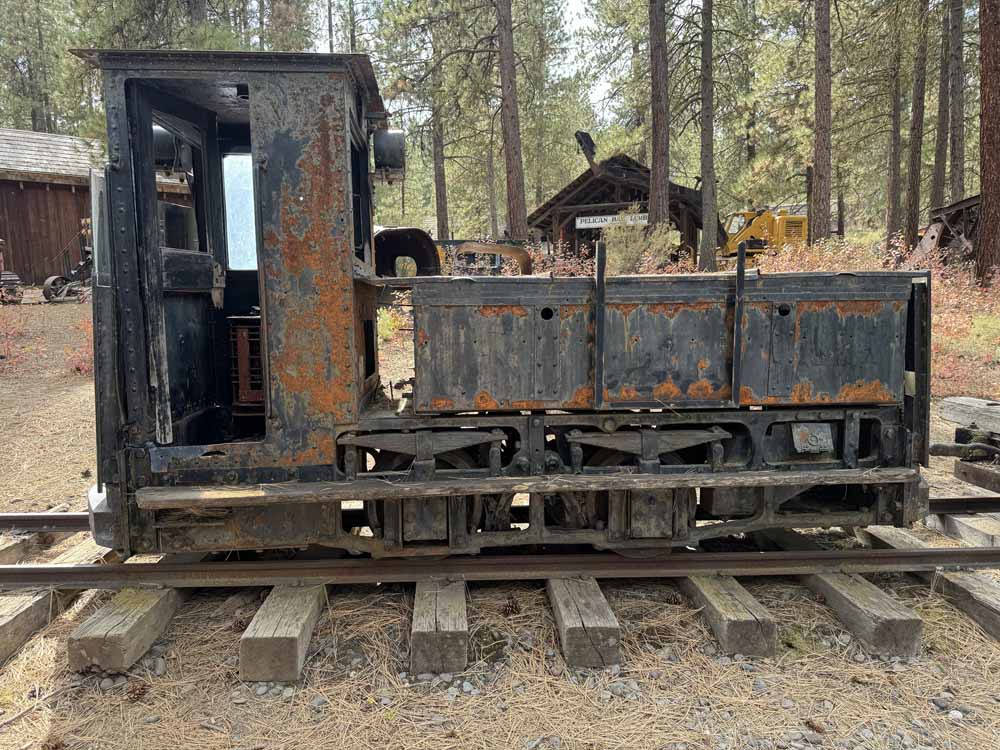 |
|
Most large sawmills employed some form of in-plant narrow gauge railroad to move lumber around in the years before straddle carriers and forklifts. Kesterson was no exception,
as they had an extensive 30-inch gauge switching railroad. In March 1930 Kesterson purchased new from Baldwin this battery powered locomotive, c/n 61253, to provide power for the switching line.
Kesteron and then successor Klamath Lumber and Box used the locomotive until conveyed in 1984 to the Collier Logging Museum near Chiloquin, where it is on display with one of the small four wheel
carts used to handle lumber. Jeff Moore photo.
|
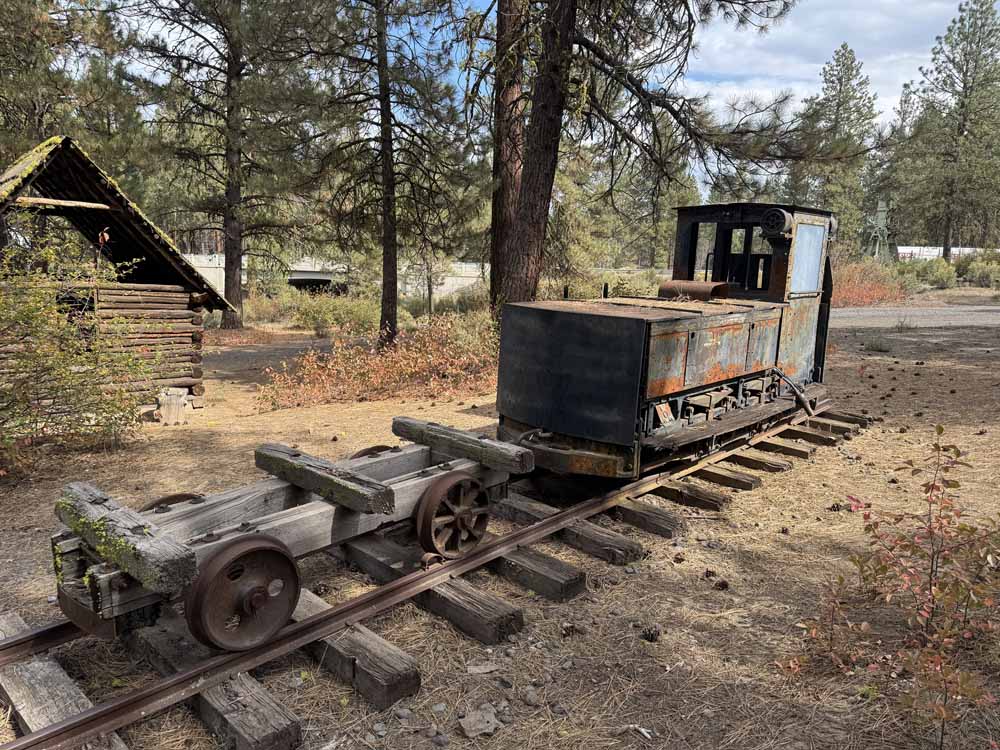 |
|
Another view of the Kesterson Baldwin switcher and the cart at Collier. Jeff Moore photo.
|
|
|